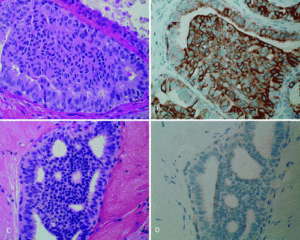
Diagnosed with Cancer? Your two greatest challenges are understanding cancer and understanding possible side effects from chemo and radiation. Knowledge is Power!
Learn about conventional, complementary, and integrative therapies.
Dealing with treatment side effects? Learn about evidence-based therapies to alleviate your symptoms.
Click the orange button to the right to learn more.
Cancer Coaching DCIS – Radiate, Aromatase Inhibitor or Watchful Waiting?

My personal opinion as a long-term cancer survivor living with several side effects is to watch and wait and lower your risk of Breast Cancer post DCIS with diet, frequent, moderate exercise and nutritional supplementation.
Hi David. I was diagnosed by sterotactic biopsy with DCIS lumpectomy performed. The surgeon called regarding pathology report. He said there was no more DCIS it had all, that it had been removed previously with the biopsy, it did show some atypical hyperplasia.
Margins clear, so now what?
- Radiologist wants to radiate
- Oncologist was me to take Tamoxifin (labs we 10 percent estrogen binding 90 percent progesterone)
- Surgeon suggest watchful waiting.
Any suggestions? Deborah
Hi Deborah- I will address your question now but please read the rest of my email below as the post covers several issues that you need to understand going forward. To answer your question “Any suggestions?” each suggestion from your radiologist/oncologist/surgeon will have risks. ADH increases your future risk of BC, radiation increases your risk of cancer and has side effects, tamoxifin increases risks and has side effects. My personal opinion as a long term cancer survivor living with several side effects is to watch and wait and lower your risk of BC with diet, moderate exercise and nutritional supplementation.
If you are interested in specific examples of what these are- diet, supplements- let me know and I will be happy to make suggestions. I don’t want to get off the topic here.
If I understand correctly, your current situation is:
1) there was no more DCIS it had all-been removed previously with the biopsy, lumpectomy performed
2) it did show some atypical hyperplasia
3) Margins clear
If I understand your email below, you have 3 recommendations thus far to include:
1) Radiologist wants to radiate
2) Oncologist was me to take Tamoxifin
3) Surgeon suggest watchful waiting
First, let me address “atypical hyperplasia”-
“Atypical ductal hyperplasia, abbreviated ADH, is the term used for a benign lesion of the breast that indicates an increased risk of breast cancer.[1]
The name of the entity is descriptive of the lesion; ADH is characterized by cellular proliferation (hyperplasia) within one or two breast ducts and (histomorphologic) architectural abnormalities, i.e. the cells are arranged in an abnormal or atypical way.
In the context of a core (needle) biopsy, ADH is considered an indication for a breast lumpectomy, also known as a surgical (excisional) biopsy, to exclude the presence of breast cancer.[2]
Treatment
ADH, if found on a surgical (excisional) biopsy of a mammographic abnormality, does not require any further treatment, only mammographic follow-up.
If ADH is found on a core (needle) biopsy (a procedure which generally does not excise a suspicious mammographic abnormality), a surgical biopsy, i.e. a breast lumpectomy, to completely excise the abnormality and exclude breast cancer is the typical recommendation.
Diane- click this link to read an exchange on Breastcancer.org discussing atypical hyperplasia–
David Emerson
- Cancer Survivor
- Cancer Coach
- Director PeopleBeatingCancer
Recommended Reading:
Controversies in the Treatment of DCIS
Summary of Points
-
Half of ductal carcinoma in situ (DCIS) recurrences are invasive, with similarities in morphology and genetic profiles between invasive and in situ cancers, providing support that DCIS is a precursor to invasive carcinoma.
-
Radiation therapy reduces the risk of local recurrence after breast-conserving surgery for DCIS by half, but can be associated with rare but serious side effects.
-
Endocrine therapy reduces the risk of local recurrence after breast-conserving surgery and RT by about 30%; however, many patients experience side effects with therapy, which reduces compliance.
-
Mortality from DCIS is low (approximately 2–5%) following appropriate surgical treatment with mastectomy or breast-conserving surgery (with or without radiation).
-
Local recurrence rates following breast-conserving surgery have declined over time, likely due to improvements in radiologic detection and pathologic assessment.
-
Young age (< 40 years) is associated with a higher risk recurrence, and especially invasive recurrence, following breast-conserving surgery, whilst older age (> 80 years) is associated with a lower risk of any recurrence.
-
Individualized risk prediction tools can assist in estimating risk of recurrence for a woman undergoing breast-conserving surgery for DCIS.
-
The optimal approach to counseling patients with DCIS includes weighing the risks and benefits of the various treatment options, so that the best treatment option for the individual is chosen.”


